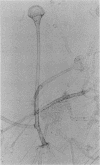Abstract
We describe a previously healthy 69-year-old man presenting with osteomyelitis of the humerus due to the zygomycete Apophysomyces elegans. The infection was acquired in Aruba, The Netherlands Antilles. The skin provided the most likely portal of entry, although there was no history of a traumatic inoculation. The patient had no history of diabetes, and no underlying immune defects were found. Despite treatment with 7.9 g of amphotericin B, an interthoracoscapular amputation proved necessary to curtail the rapid spread of the fungus in this immunocompetent host.
Full text
PDF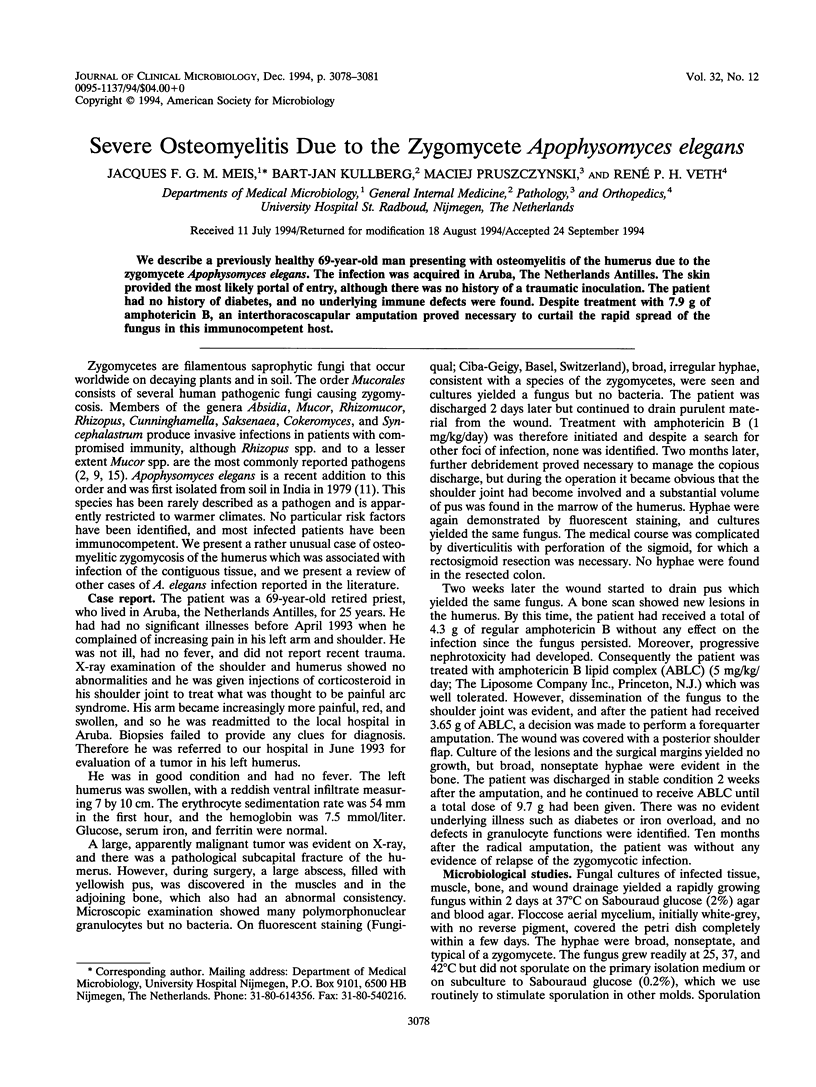
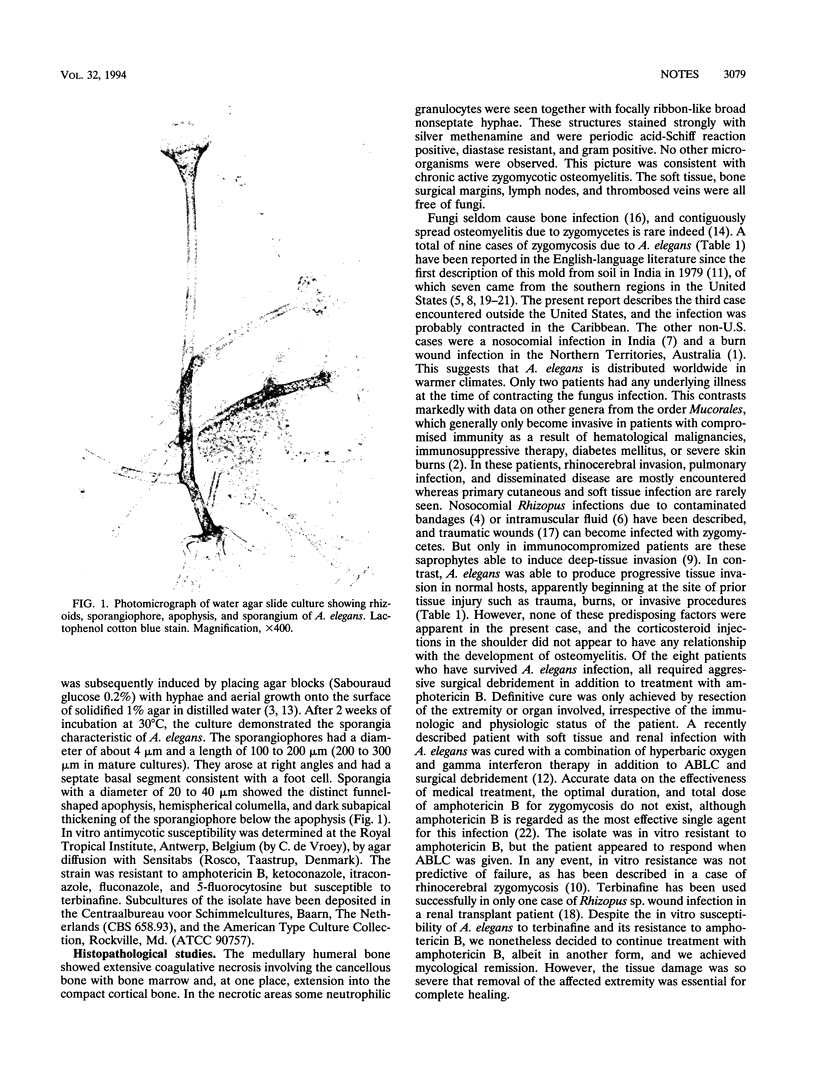
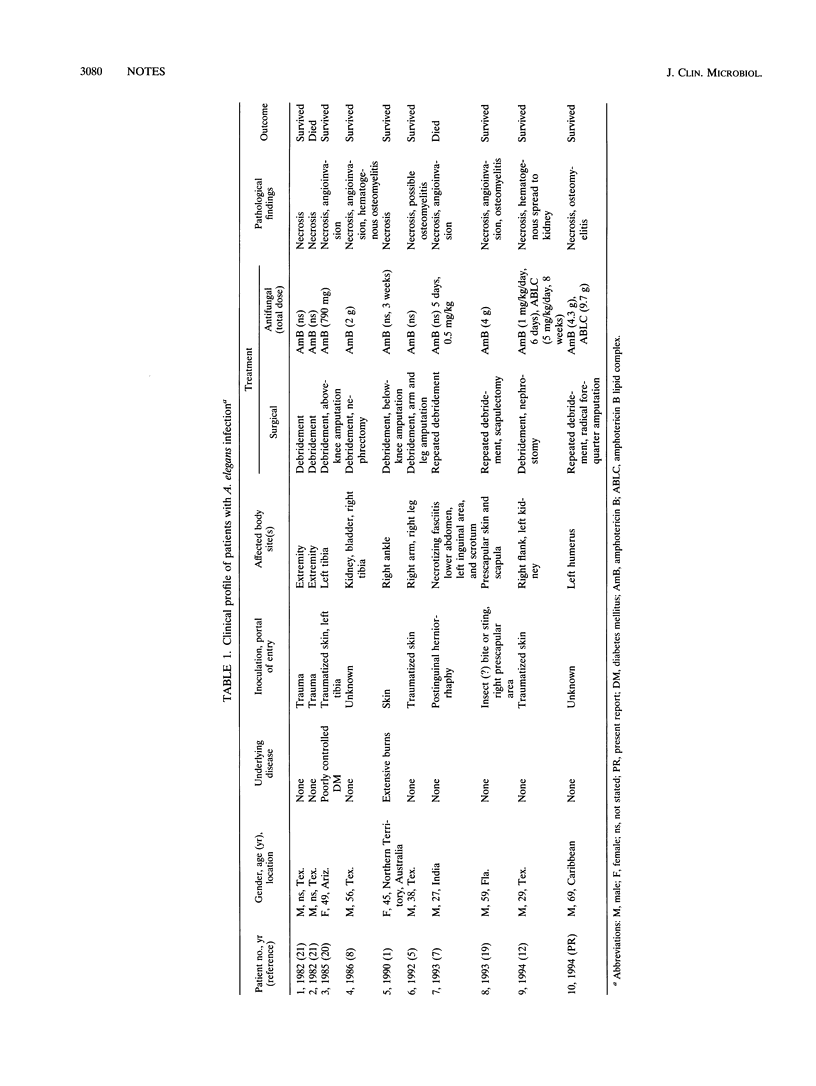
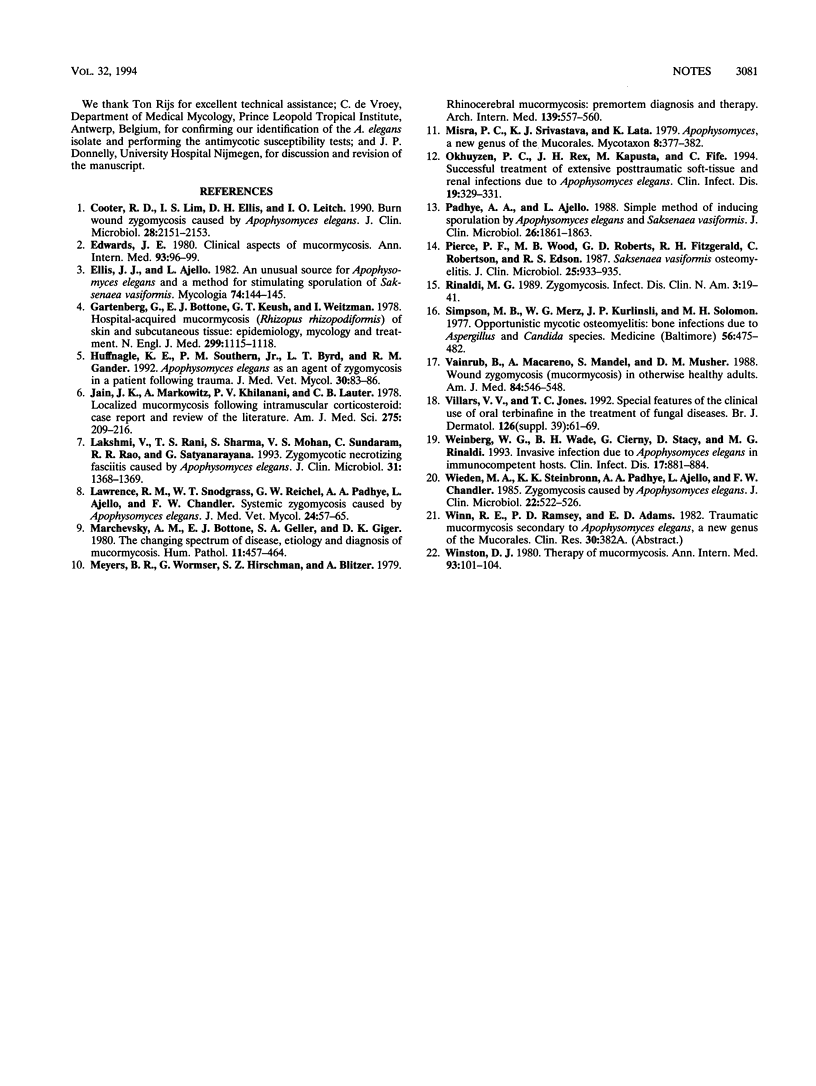
Images in this article
Selected References
These references are in PubMed. This may not be the complete list of references from this article.
- Cooter R. D., Lim I. S., Ellis D. H., Leitch I. O. Burn wound zygomycosis caused by Apophysomyces elegans. J Clin Microbiol. 1990 Sep;28(9):2151–2153. doi: 10.1128/jcm.28.9.2151-2153.1990. [DOI] [PMC free article] [PubMed] [Google Scholar]
- Gartenberg G., Bottone E. J., Keusch G. T., Weitzman I. Hospital-acquired mucormycosis (Rhizopus rhizopodiformis) of skin and subcutaneous tissue: epidemiology, mycology and treatment. N Engl J Med. 1978 Nov 16;299(20):1115–1118. doi: 10.1056/NEJM197811162992007. [DOI] [PubMed] [Google Scholar]
- Huffnagle K. E., Southern P. M., Jr, Byrd L. T., Gander R. M. Apophysomyces elegans as an agent of zygomycosis in a patient following trauma. J Med Vet Mycol. 1992;30(1):83–86. doi: 10.1080/02681219280000111. [DOI] [PubMed] [Google Scholar]
- Jain J. K., Markowitz A., Khilanani P. V., Lauter C. B. Localized mucormycosis following intramuscular corticosteroid. Case report and review of the literature. Am J Med Sci. 1978 Mar-Apr;275(2):209–216. doi: 10.1097/00000441-197803000-00013. [DOI] [PubMed] [Google Scholar]
- Lakshmi V., Rani T. S., Sharma S., Mohan V. S., Sundaram C., Rao R. R., Satyanarayana G. Zygomycotic necrotizing fasciitis caused by Apophysomyces elegans. J Clin Microbiol. 1993 May;31(5):1368–1369. doi: 10.1128/jcm.31.5.1368-1369.1993. [DOI] [PMC free article] [PubMed] [Google Scholar]
- Marchevsky A. M., Bottone E. J., Geller S. A., Giger D. K. The changing spectrum of disease, etiology, and diagnosis of mucormycosis. Hum Pathol. 1980 Sep;11(5):457–464. doi: 10.1016/s0046-8177(80)80054-2. [DOI] [PubMed] [Google Scholar]
- Meyers B. R., Wormser G., Hirschman S. Z., Blitzer A. Rhinocerebral mucormycosis: premortem diagnosis and therapy. Arch Intern Med. 1979 May;139(5):557–560. doi: 10.1001/archinte.139.5.557. [DOI] [PubMed] [Google Scholar]
- Okhuysen P. C., Rex J. H., Kapusta M., Fife C. Successful treatment of extensive posttraumatic soft-tissue and renal infections due to Apophysomyces elegans. Clin Infect Dis. 1994 Aug;19(2):329–331. doi: 10.1093/clinids/19.2.329. [DOI] [PubMed] [Google Scholar]
- Padhye A. A., Ajello L. Simple method of inducing sporulation by Apophysomyces elegans and Saksenaea vasiformis. J Clin Microbiol. 1988 Sep;26(9):1861–1863. doi: 10.1128/jcm.26.9.1861-1863.1988. [DOI] [PMC free article] [PubMed] [Google Scholar]
- Pierce P. F., Wood M. B., Roberts G. D., Fitzgerald R. H., Jr, Robertson C., Edson R. S. Saksenaea vasiformis osteomyelitis. J Clin Microbiol. 1987 May;25(5):933–935. doi: 10.1128/jcm.25.5.933-935.1987. [DOI] [PMC free article] [PubMed] [Google Scholar]
- Rinaldi M. G. Zygomycosis. Infect Dis Clin North Am. 1989 Mar;3(1):19–41. [PubMed] [Google Scholar]
- Simpson M. B., Jr, Merz W. G., Kurlinski J. P., Solomon M. H. Opportunistic mycotic osteomyelitis: bone infections due to Aspergillus and Candida species. Medicine (Baltimore) 1977 Nov;56(6):475–482. [PubMed] [Google Scholar]
- Vainrub B., Macareno A., Mandel S., Musher D. M. Wound zygomycosis (mucormycosis) in otherwise healthy adults. Am J Med. 1988 Mar;84(3 Pt 1):546–548. doi: 10.1016/0002-9343(88)90282-3. [DOI] [PubMed] [Google Scholar]
- Villars V. V., Jones T. C. Special features of the clinical use of oral terbinafine in the treatment of fungal diseases. Br J Dermatol. 1992 Feb;126 (Suppl 39):61–69. doi: 10.1111/j.1365-2133.1992.tb00013.x. [DOI] [PubMed] [Google Scholar]
- Weinberg W. G., Wade B. H., Cierny G., 3rd, Stacy D., Rinaldi M. G. Invasive infection due to Apophysomyces elegans in immunocompetent hosts. Clin Infect Dis. 1993 Nov;17(5):881–884. doi: 10.1093/clinids/17.5.881. [DOI] [PubMed] [Google Scholar]
- Wieden M. A., Steinbronn K. K., Padhye A. A., Ajello L., Chandler F. W. Zygomycosis caused by Apophysomyces elegans. J Clin Microbiol. 1985 Oct;22(4):522–526. doi: 10.1128/jcm.22.4.522-526.1985. [DOI] [PMC free article] [PubMed] [Google Scholar]



